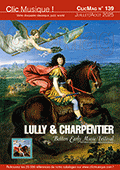 Avec cet enregistrement nous découvrons deux très jeunes artistes (18 et 19 ans au moment des enregistrements) dont l’art est déjà impressionnant. Pour ce premier disque, ils ont choisi des compositeurs tchèques. Trois compositeurs qui sont : Josef Suk (1874-1935, gendre de Dvorak), Bohuslav Martinu (1890-1959, le plus "français" des trois) et Luboš Fišer (1935-1999, l’inconnu du jour). Trois générations donc, avec des œuvres composées entre 1900 et 1961. En 1900, Josef Suk avait 26 ans et venait de se marier lorsqu’il composa les quatre pièces de l’opus 17. Ces pièces ne renient ni l’héritage romantique ni les apports de l’impressionnisme. Généreuses et complices elles font preuve d’une virtuosité discrète et l’écriture de la partie de piano leur donne souvent de airs de trios. Le mouvement final (Burlesque) apporte une touche d’humour et de fantaisie des plus séduisantes. La sonate n° 1 de Martinu date de son séjour parisien en 1929. Avec son originalité, elle est bien de ce temps et s’y mêlent classicisme, emprunts au jazz, recherches sonores (un pizzicato qui sollicite à la fois le violon et le piano) et phrases minimalistes étrangement syncopées (avec l’amorce d’un tango). Le 3e mouvement est construit à la manière d’une suite de danse baroque moderniste et le mouvement final résonne irrésistiblement avec "L’Histoire du soldat" de Stravinski. Dans la "Rhapsodie tchèque", plus tardive (1945), le piano accompagne le violon comme un orchestre... qui était prévu ! C’est le violoniste Fritz Kreisler qui en dissuada le compositeur. L’œuvre de Fišer date de 1961 et l’écriture en est tout autre. Par contre, elle propose un véritable dialogue entre les deux instruments, sans que l’un accompagne l’autre. Nous terminerons en redisant l’immense qualité des interprètes dont il faudra suivre les carrières de près. (Marc Ossorguine)  The Supraphon debut of 18-year-old Daniel Matejca (Ysaÿe – Violin Sonatas, 2023) has attracted great attention with critics around the world writing about his remarkable talent, comparing his recording with the very best. That same year, the 17-year-old pianist Jan Schulmeister came away from Texas with third prize at the prestigious Cliburn Junior Competition. And also that year, the Matejca – Schulmeister duo celebrated victory in the chamber music category at the competition Concertino Praga; that opened them the door to the studio for the making of this recording. Instead of brilliant, virtuosic show pieces, the young artists chose challenging Czech repertoire of the 20th century with pivotal works by Suk, Martinu, and Luboš Fišer. Martinu composed his Czech Rhapsody in the USA just after the end of the Second World War for Fritz Kreisler, who was 70 years old by then. Even today, this beautiful composition is a great technical challenge for the soloist. Martinu’s First Violin Sonata (1929) still belongs to the composer’s Paris period, as can be seen from jazz elements and the sometimes impressionistic mood of the piano part. The third composer, Luboš Fišer, is known mainly in his homeland, but his music also earned international awards (UNESCO prize, Prix d’Italia). His violin sonata The Hands was originally supposed to have been titled Crux, but that was completely unacceptable during the period of harsh communist rule. In the words of Ivan Štraus, who premiered the sonata, “…the composition could be interpreted as a loose depiction of the Stations of the Cross at Easter with dramatic moments of whipping, hatred, and anxiety followed by a funeral procession (pizzicato) and then the glorious Resurrection in the concluding apotheosis to the sound of bells.”
 |
